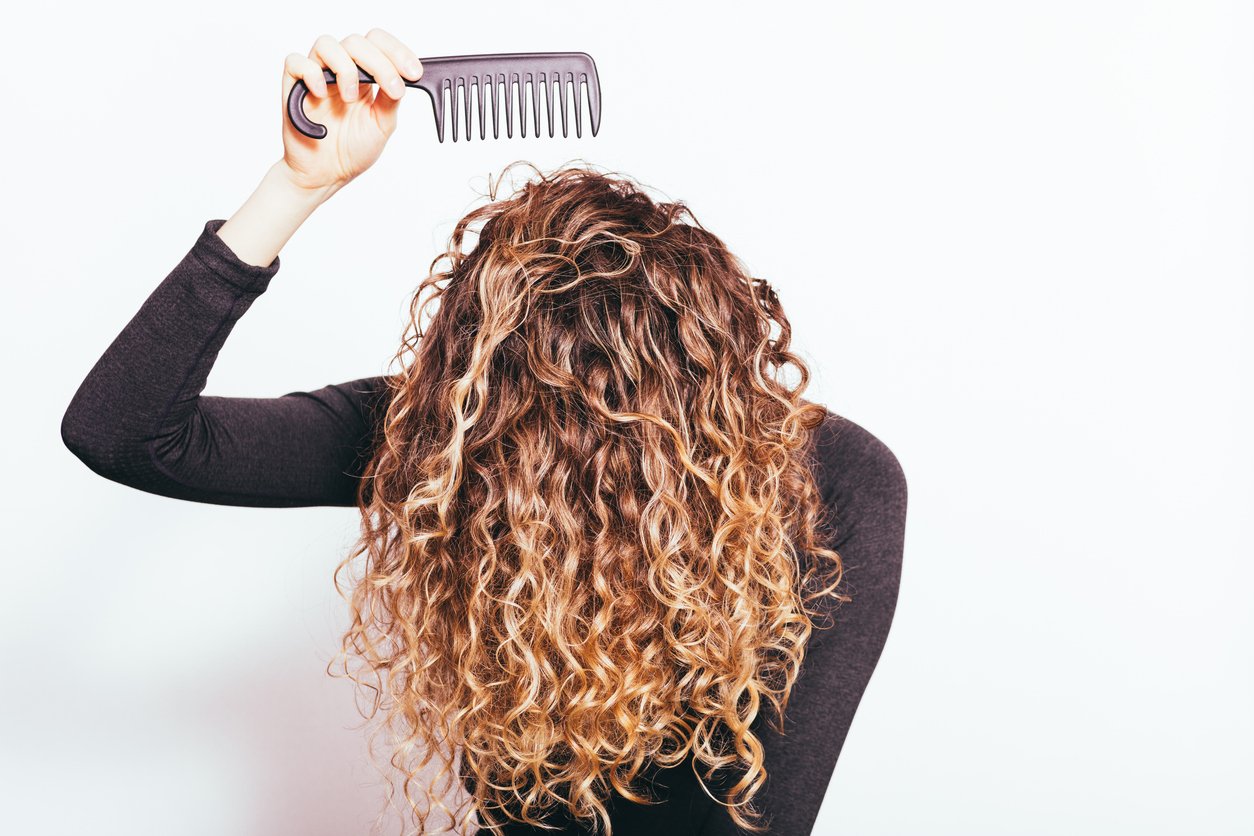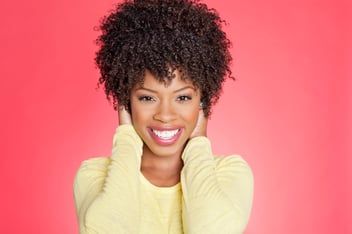 5min
5min
Brushing curls might be the best way to tease out tangles, but it isn’t an entirely straightforward process.
Lucky for you, though, we’ve rounded up exactly how often you should be brushing your curls (spoiler: not very often at all), the best techniques for curly hair brushing and how to detangle curly hair if you end up in a knotted mess in-between shampoos. Read on for everything you need to know...
How often should you brush curly hair?
Curly-haired curls should only ever brush or comb their hair when it’s wet. Brushing curls when they’re dry will only loosen and flatten your curl pattern, taking away all that gorgeous definition and bounce you spent time creating when you washed it. You’re also more likely to make the hair fluffy and frizzy (again, non-ideal) and also damage your strands by snagging them.
Therefore, how often you should be brushing curls depends on how often you wash your hair. And the tighter your curl pattern, so the closer to 4C coils you get, the less you’ll want to be shampooing your strands. The zig-zag shape of coily hair means it’s naturally drier than say 2A hair, as the oils from your scalp aren’t able to travel down the hair shaft very easily, and the twisty-turny shape also makes them more fragile. Washing too regularly can dry out the hair and cause damage.

It’s not just your hair type you need to consider when deciding how often to wash your hair though, but also your scalp. If it’s quite greasy, then you may find that you need to wash more regularly to prevent a slick look – especially if your hair is fine. It is possible to train your scalp to produce less oil though, which means you won’t need to wash your hair quite so much. Using shampoo, even a nice gentle, sulphate-free one, can strip the natural oils away from your scalp, which causes it to create even more oil in retaliation.
Try weaning yourself off washing by adding an extra day or two between shampoos, and you’ll notice that your roots become less greasy over time. Also keep in mind that if your scalp is unhappy or easily irritated, then you may need to wash your hair more to keep uncomfortable itching and flakes at bay, and, in this case, you’ll naturally end up brushing your curls more too.
Looking for the best way to style your curls? Find all the best tips and tricks in our guide "All the steps for a perfect curl styling routine".
How to detangle curly hair
Want to know how to detangle curly hair? These are the key things to keep in mind:
Best time for detangling
As we have established, curly hair brushing should only ever happen when the hair is wet, and this is the best time for detangling too. This is because your hair should already be nice and smooth from your conditioner, and if you want to make it even smoother, add an extra pump or spritz of leave-in conditioner for extra slip. Tools-wise, it’s best to use a wide-tooth comb or brush with bendy, sparsely-spaced bristles that will glide through the hair without catching or snagging.
Technique
As for the technique, it might sound a little strange but you want to detangle from the ends upwards, rather than from the root down. Tangles tend to be more concentrated on the lengths rather than close to the roots, so this will allow you to focus the majority of your energy and efforts in this area, as well as stop you from accidentally (and painfully) dragging a brush through a tangle. Work in sections rather than large chunks – especially if your hair is thick.
If you do need to detangle between washes, use a spray bottle to dampen hair with water and then use your fingers to gently prise apart any curls that have become combined or matted. Don’t pull or rip at the hair, and don’t detangle at all if you haven’t got the time to do so carefully – detangling in a rush never ends well. Once you’ve teased the tangles out, you can use your fingers to reshape any curls that got smooshed in the process.

Prevent knots
Ideally, you shouldn’t need to detangle between washes, and there are ways to prevent knots from forming. If you want to tie your hair up, use soft, wide hairbands like silk scrunchies, as hair is more likely to weave itself around and become attached to a narrower band. Sleep on a silk pillowcase, or with your hair in a bonnet or wrap, to prevent tangles from tossing and turning overnight, and also make sure that your hair is well moisturised, as this will help with curl definition, plus make strands easier to separate if they do become tangled together.
Bellissima Italia Diffon to enhance your curls definition

Once you’ve finished brushing curls and detangling post-wash, you’ll want to use a diffuser to enhance their definition and maintain volume and bounce. You can also reach for your diffuser if you’ve used water to dampen the hair between shampoos, taking advantage of the opportunity to revive and enhance your spirals. The great thing about a diffuser like the Diffon is that the low speed and low heat settings mean it’s nice and gentle, and isn’t going to damage your strands.
Thanks to the wide-surface area with evenly distributed air flow, the Diffon Supreme help avoid tangles, as the hair is carefully set in the style you created post-shower by scrunching and finger coiling, rather than blowing it wildly around in all directions. There’s also no risk of hair becoming caught in the perforated grid, and the nodules are perfectly spaced so you can circle them into the hair without the risk of snagging strands between them. Easy.






